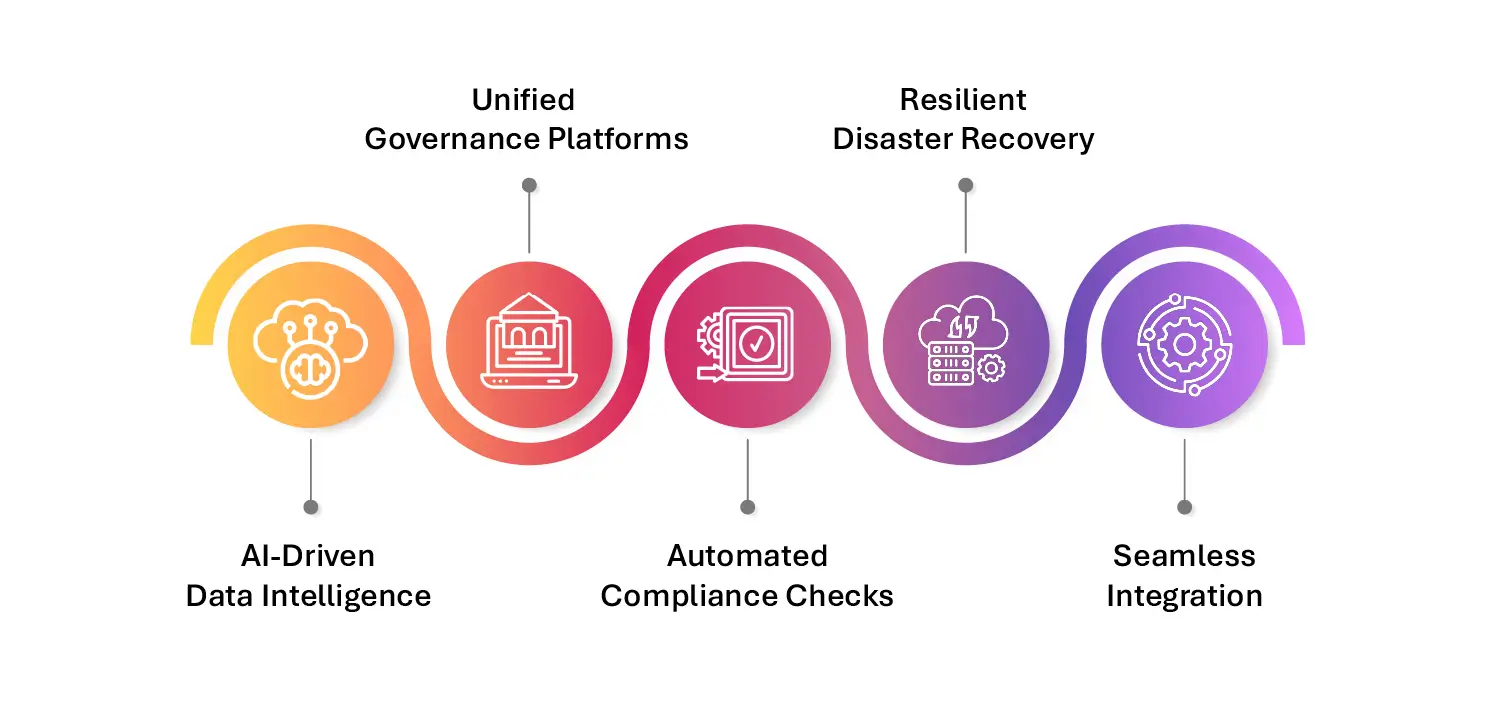Hybrid Cloud Management refers to the orchestration, control, and optimization of IT resources across both on-premises systems and public cloud services. As part of a broader hybrid cloud strategy, it enables organizations to manage their hybrid cloud infrastructure effectively, balancing legacy private cloud infrastructure with modern cloud-native applications.
This unified approach helps enterprises manage distributed workloads, automate governance, and ensure regulatory compliance while unlocking the full potential of cloud technology and digital transformation. With intelligent management solutions, hybrid cloud management empowers businesses to dynamically shift workloads, optimize data storage, and secure data across environments, without compromising agility or data protection.
Why It Matters in the Enterprise Landscape
In today’s hyper-connected world, hybrid cloud computing is no longer optional—it’s foundational. According to Gartner, by 2027, 90% of enterprises will rely on hybrid cloud architecture to support their critical operations.
The challenge lies in coordinating diverse infrastructure, meeting regulatory requirements, and delivering consistent performance in real time.
Enterprises pursuing digital transformation need more than agility—they need accountability. Hybrid cloud management provides that by ensuring consistent data security, facilitating seamless cloud migration, and maintaining visibility and control over sensitive information, subject to data residency laws.
Whether managing AI workloads or legacy applications, hybrid cloud management is essential for driving cost optimization, streamlining data integration, and ensuring business continuity through disaster recovery.
Key Capabilities of Hybrid Cloud Management
Enterprises leveraging hybrid cloud management benefit from:
- Unified Visibility: Real-time monitoring across hybrid cloud environments, including public cloud services and on-premises infrastructure.
- Intelligent Workload Placement: Leveraging artificial intelligence and machine learning to determine the most efficient environment for each workload.
- Data Mobility and Orchestration: Enabling fast, secure, policy-driven cloud migration and cross-platform data integration.
- Policy-Based Governance: Enforcing regulatory compliance, access control, and lifecycle policies at scale.
- Cost Optimization Tools: Real-time insights into cloud usage, performance, and spending to drive financial efficiency.
Challenges in Hybrid Cloud Management
Despite the advantages, managing a hybrid cloud environment presents a unique set of challenges:
- Data Sprawl: Scattered datasets across multiple environments hinder visibility and increase compliance risks.
- Security Fragmentation: Disparate security policies across cloud and on-premise platforms weaken your data security posture.
- Compliance Complexity: Navigating evolving global regulatory requirements is resource-intensive and error-prone.
- Legacy Integration: Legacy systems often struggle to align with cloud-native or cloud technology platforms.
- Skills Gap: Managing a hybrid ecosystem requires expertise in both traditional IT and modern cloud infrastructure.
How Technology Solves These Challenges

Modern management solutions built for hybrid cloud computing use automation, AI, and analytics to solve these roadblocks:
- AI-Driven Data Intelligence: Uses artificial intelligence and machine learning for real-time anomaly detection, performance insights, and data discovery.
- Unified Governance Platforms: Deliver a single pane of glass to monitor, govern, and control data across the entire hybrid cloud infrastructure.
- Automated Compliance Checks: Proactively identify and remediate violations related to data residency, access control, and privacy.
- Resilient Disaster Recovery: Orchestrate reliable, policy-based disaster recovery across both cloud and on-premises environments.
- Seamless Integration: Link data storage, applications, and services across cloud and legacy platforms to support innovation and agility.
Hybrid Cloud Management and Data Dynamics
As the hybrid cloud becomes the backbone of digital transformation, effective hybrid cloud management is essential. At Data Dynamics, we empower enterprises with AI-powered tools designed to:
- Discover, classify, and govern unstructured data in real time
- Ensure regulatory compliance through dynamic policy enforcement
- Automate cloud migration and data movement between file and object formats
- Secure sensitive assets across hybrid cloud architecture using role-based access and risk intelligence
- Maintain sustainable, cost-efficient operations with built-in cost optimization
Hybrid cloud management is not a side task—it’s the core enabler of enterprise evolution. In an era defined by artificial intelligence, real-time decision-making, and data protection laws, the ability to govern and optimize your hybrid cloud environment is a true differentiator.
Getting Started with Data Dynamics:
- Learn about Unstructured Data Management
- Schedule a demo with our team
- Read the latest blog: In the Clouds, with Precision—A Data-First Approach to Unveiling the Potential for Unprecedented AI Effectiveness






